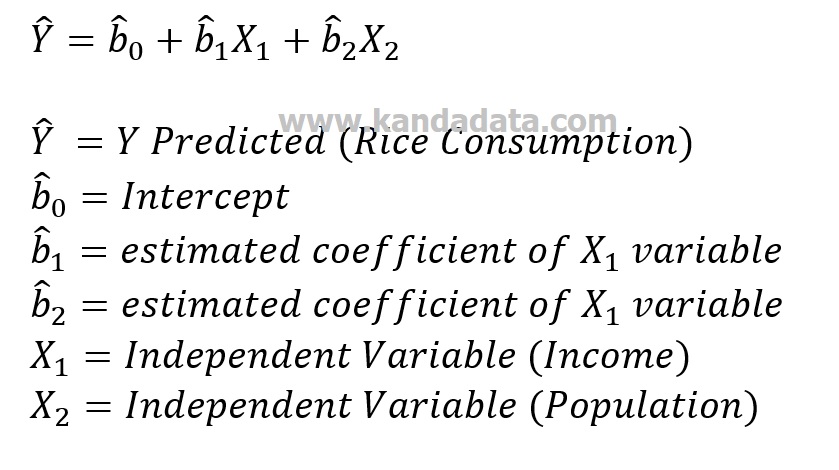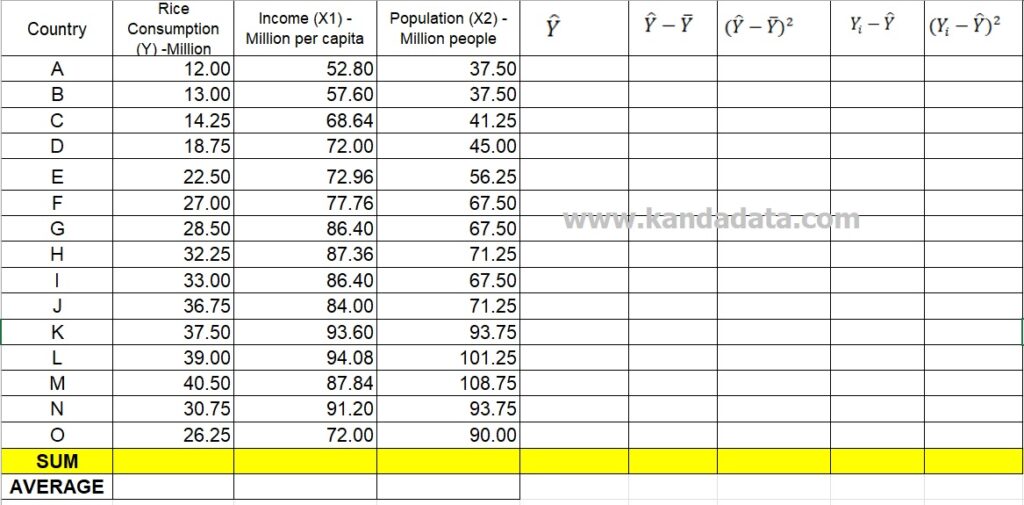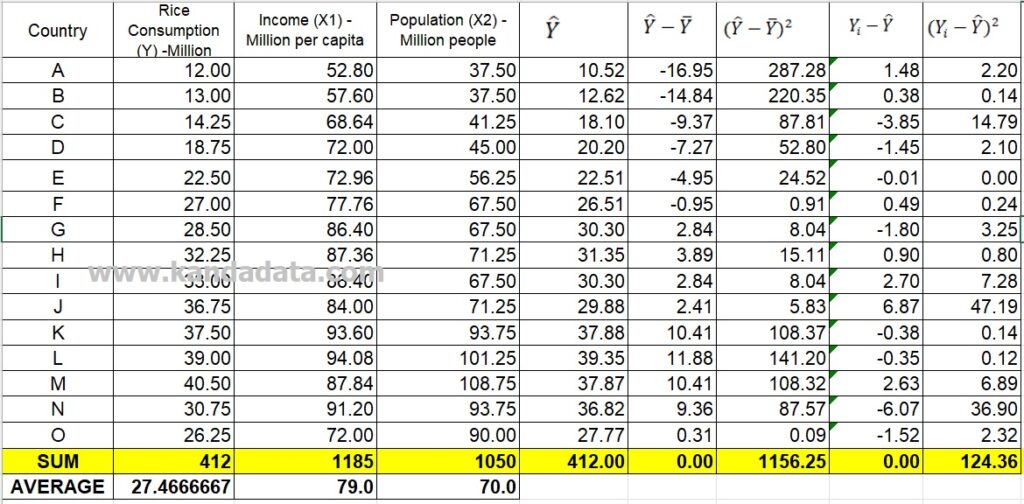Blog
How to Find Y Predicted, Residual, and Sum of Squares in Multiple Linear Regression
In the previous article, we have determined the value of the predicted Y value, residual value, and sum of squares in simple linear regression. As researchers, we must understand how to find it in multiple linear regression. So, in this article, I will convey a tutorial on how to find the predicted Y value, residual value, and sum of squares in multiple linear regression.
Our case study example aims to find out how the effect of income and population on rice consumption. In multiple linear regression analysis, based on the estimated coefficients of bo, b1, and b2, the predicted value of the dependent variable can be determined.
In this case of multiple linear regression, we use two independent variables consisting of income (X1) and population (X2). Rice consumption (Y) was used as the dependent variable.
The estimated value of the regression coefficient is used to calculate the Y predicted for each observation. Furthermore, the residual value can be determined if we have calculated the Y Predicted. The residual value is the difference between Y actual and Y predicted.
The Sum of squares can be determined if the Y predicted and residual has been calculated. The Sum of squares in multiple linear regression is also divided into regression/model sum of squares and residual/error sum of squares.
Formula to Find Y Predicted, Residual, and Sum of Squares
We can use a formula equation to find the Y predicted, residual, and sum of squares. I refer to the book written by Koutsoyiannis (1977), as can be seen below:
The formula of Y Predicted in multiple linear regression:

The formula of Residual in multiple linear regression:

The formula of Sum of Squares in multiple linear regression:


How to Find Y Predicted, Residual, and Sum of Squares using Excel
The first step to calculating Y predicted, residual, and the sum of squares using Excel is to input the data to be processed. In the second step, you need to create additional columns in excel.
Please fill in respectively with Y predicted, the difference between Y predicted and the average of Y actual, Squared off the difference between Y predicted and the average of Y actual, the difference between Y actual and Y predicted, and squared off the difference between Y actual and Y predicted.
You need to add two rows below the data and fill them with sum and average. For more details, you can see the table below:

Next, you must calculate each component’s value using the equation formula that I have conveyed above. You can compare the results of your calculations with the results of my calculations as in the table below:

Well, here’s the tutorial on how to find the value of the predicted Y value, residual value, and sum of squares in simple linear regression that I can convey. See you in the next article!
1 comment
Leave a Reply
You must be logged in to post a comment.

Pingback: How to Calculate Variance, Standard Error, and T-Value in Multiple Linear Regression - KANDA DATA